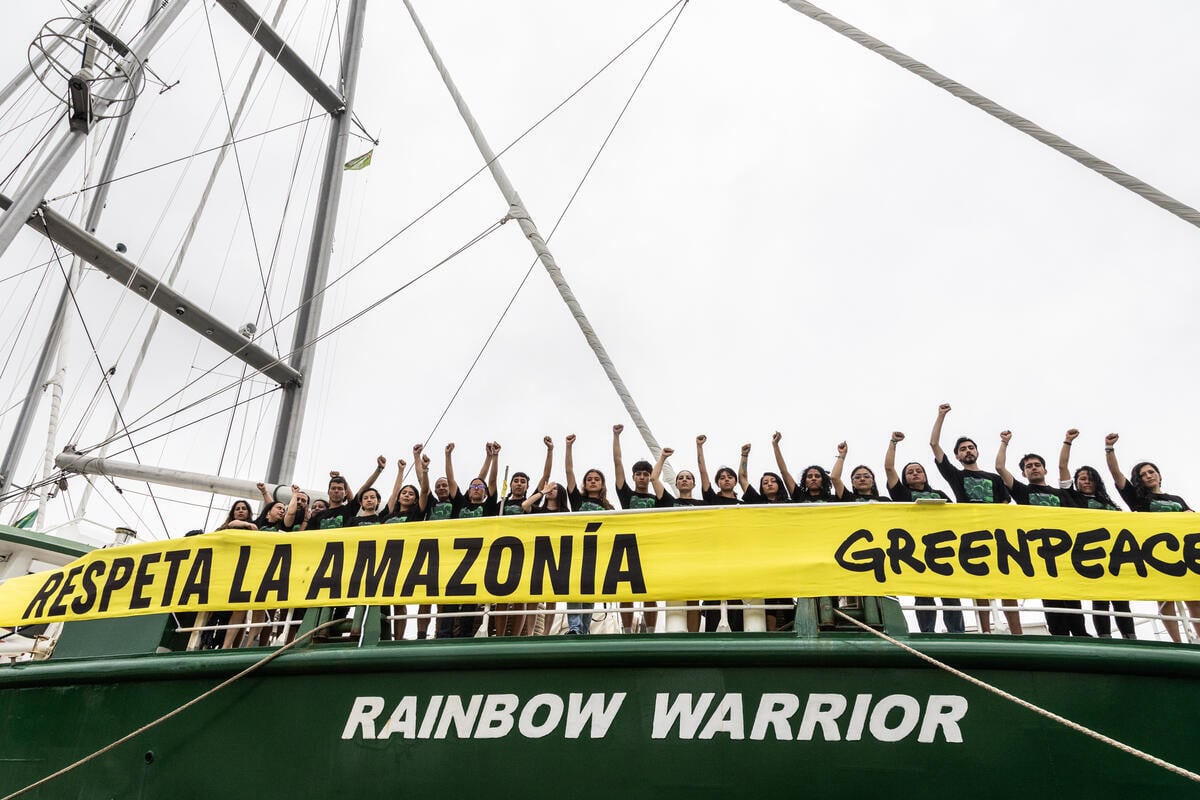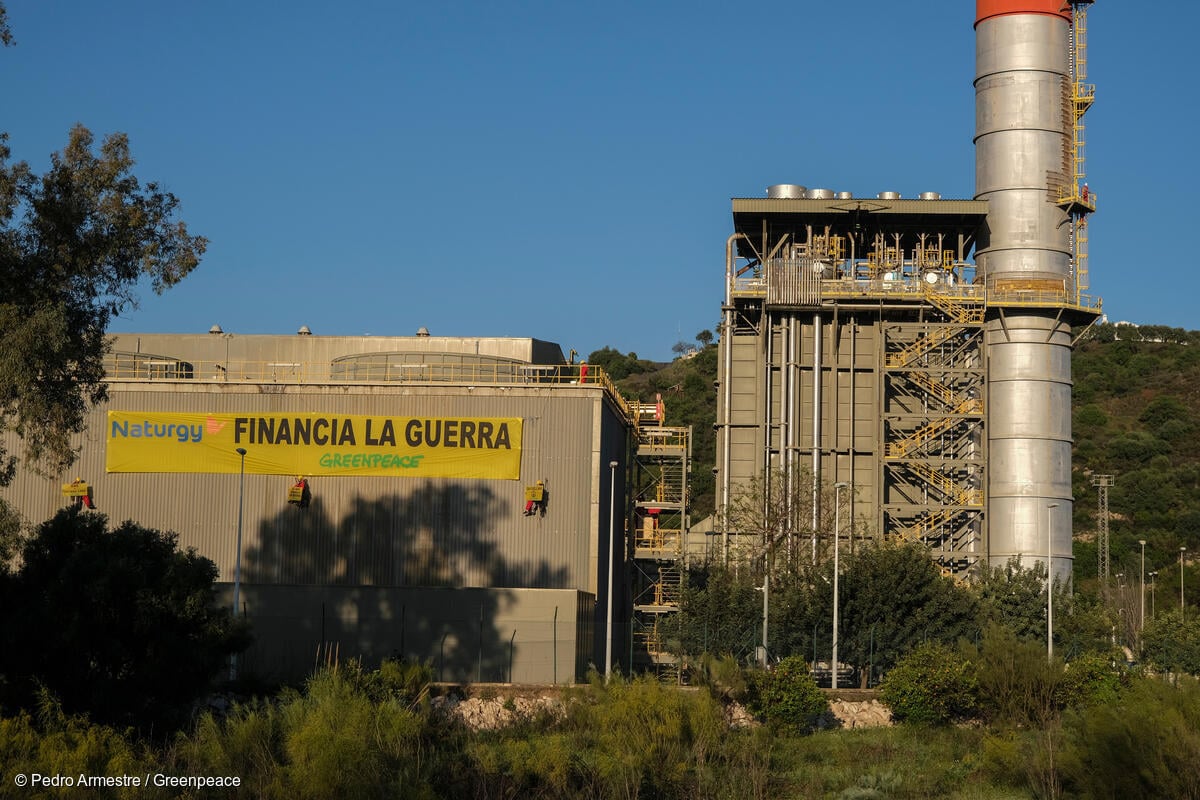The European Union urgently needs an emission reduction target in line with science that does not rely on an increasingly fragile nature. Accounting tricks that allow governments to compensate carbon increases in forests and soils to achieve their emission reductions will not solve climate breakdown.

Humanity has pushed the planet and nature to its limit. The response to this crisis has so far been anything but sufficient. Current climate pledges to the Paris Agreement would still mean catastrophic warming of over 3°C compared to pre-industrial levels. Governments and corporations continue to do far too little to significantly reduce emissions and halt the mass extinction of species. Protecting intact and restoring damaged ecosystems is absolutely necessary – but it cannot replace reduction of emissions in sectors like energy, transport and agriculture.
The Commission proposal to increase its 2030 climate target to at least 55% net-emission reductions, accounts for the emissions absorbed by carbon sinks like forests and soil too, raising the target on paper, but not in the actual reductions of emissions in the real world. According to the Commission’s own impact assessment, this target could therefore result in as little as a 50.5% cut in emissions in polluting sectors, like energy, transport and farming.
The European Parliament on the other hand has backed an increase in the EU’s 2030 climate target to a 60% cut in real emissions and rejected the Commission plan to rely on net accounting and hence carbon sinks like forests and grasslands to artificially inflate the 2030 climate target outright. To have a chance of limiting global heating to 1.5°C above pre-industrial levels, avoiding the worst effects of climate breakdown, Greenpeace is calling for a minimum 65% cut in EU emissions by 2030.
WHY WE CAN’T RELY ON NATURE TO MEET CLIMATE TARGETS
Oceans are already suffering from the huge volumes of CO2 they have absorbed so far. Forests are increasingly suffering from the effects of the climate crisis, in particular through droughts and resulting forest fires and pest outbreaks. We must protect intact ecosystems, and restore degraded ones to strengthen their resilience against climate change, to protect their carbon stocks and to increase their capacity to take up the accumulated carbon from the atmosphere. We must do this to store the carbon dioxide that we have emitted into the atmosphere over time, not to offset ongoing emissions.
A net-emissions target is essentially an accounting terminology, which suggests that positive emissions are cancelled out by negative emissions (removals of GHG from the atmosphere). Based on this logic, many countries and corporations are calling for tree-planting, reforestation and restoration of degraded ecosystems to “soak up” fossil fuel emissions. Yet, not only are annual carbon emissions from fossil fuels ten times greater than the annual amount of carbon that could be stored by sustainable land carbon mitigation methods, but storing carbon in land is likewise no substitute for reducing fossil fuel emissions.
A “net” accounting target hides the amount of ongoing emissions from fossil fuels and land-use change. Many climate scenarios assume a massive reliance on removals, whether by natural or technological sinks, to stay within 1.5°C. Forests and nature are increasingly under pressure, through in particular logging, the conversion for commodity production and climate change effects, such as droughts and pest outbreaks. Any additional burden on nature could ultimately risk even higher temperatures. The solution to this is to minimise reliance on removals by focusing first and foremost on emissions reductions, and ensuring full transparency in reporting of reductions and removals, through separate emission reduction targets for the emission reductions in sectors like energy, transport and agriculture and carbon removals.
Moving carbon from the atmosphere back to the land through reforestation and restoration of degraded ecosystems can reduce atmospheric carbon, but cannot offset ongoing fossil fuel emissions. This is because carbon in the atmosphere and carbon in land systems are both part of the “active” land-atmosphere-ocean carbon cycle – increasing the carbon in land systems parks that carbon in an unstable part of this active system, with no guarantee for it to remain there permanently. Carbon in the ground stored as fossil fuels on the other hand are permanently locked away, and burning them adds carbon to the active carbon cycle in aggregate. Once added, this new additional carbon cannot be removed from the carbon cycle in time-scales relevant to climate change. Continuing to burn fossil fuels while assuming that these emissions are being offset by increasing land carbon will inevitably lead to increased heating over the century.
This problem is exaggerated through the logging of forest for the unsustainable use in bioenergy as sink capacity is reduced and direct emissions are caused. Between 2000 and 2018, total timber harvesting in EU countries has grown by 21%, with wood-based bioenergy being the biggest driver of this increase, with a 59 % increase in harvesting of energy wood. Burning whole trees and stumps is a waste of this valuable resource. CO2 taken up and stored in the wood of the harvested trees is instantly released back to the atmosphere through combustion. The bioenergy criteria of the Renewable Energy Directive need a radical overhaul if nature is to recover and help store past fossil fuel emissions.
Removals must be delivered in addition to ambitious reductions in emissions. Combining the two in a single “net-emissions” goal obscures how much and how fast emissions are being reduced.
INTERNATIONAL OFFSETS
So far, the EU climate law does not provide for any opening that allows the purchase of emission certificates outside the European Union in order to achieve the EU climate targets. However, Conservative politicians, in particular the German CDU/CSU have tried to bring this into the discussion. During the Parliament vote on the EU climate law, the European People’s Party group tried to include an amendment in support of international offsets, but failed.
Nevertheless, the EU is continuing to support the creation of an international offset market at the international level as part of the Paris climate agreement (Article 6). So far the EU has not stood strong in international negotiations to ensure sound environmental safeguards and has missed the opportunity to champion human rights for the future development of international carbon markets under the Paris agreement.
A report for the European Commission’s Directorate-General for Climate Policy showed that previous international offset mechanisms, so called Clean Development Mechanism (CDM) projects had hardly any impact to protect the climate. Similar mechanisms are now being proposed under the Paris Climate Agreement (Article 6). International offset projects have also long posed a threat to human rights and the rights of indigenous peoples. The EU must reject any international carbon market that allows for international trading of especially nature based carbon credits and strengthen other means of international cooperation to fight the climate crisis. Further commercialisation of nature will only add pressure on biodiversity, climate, human rights and fuel conflicts over land.
Instead the EU should abandon market-based mechanisms as they have not been able to deliver the desired results and have been a big contributor to pushing humanity and nature to its limits. The global community should rather focus on mobilising enough financial resources to support climate and nature protection and restoration by finding new forms of financing such as taxation of carbon and other externalities, financial transaction taxes, and reforms to the global tax system to make polluters pay. In addition, public funds, such as the EU’s recovery fund and Common Agricultural Policy need to be realigned to respect climate and nature and perverse fossil fuel subsidies need to end.
CARBON BUDGET
Emissions budgeting is an effective tool to understand remaining allowable emissions. The EU current emission reduction targets are defined by political decisions. They are not based on an assessment of the EU’s share of the world’s remaining emissions, considering the EU’s capacity to act and historic emissions. The European Parliament position on the Climate Law would require the Commission to propose an EU carbon budget. This proposal must be rooted in science and, as required by the Paris climate agreement, take the EU’s relative wealth into account.
An emissions budget should be developed that represents the EU’s “fair share” of the remaining global emission budget. There are multiple, but no scientifically “correct,” way(s) to calculate a fair share of global emissions for any particular entity, as such a calculation relies on ethical questions of equity.
For the EU as a whole, the EU’s remaining Paris-compliant carbon budget (equity not considered) would be a maximum of 27 Gt CO2 (for energy only). This is less than 9 years of current emissions. However, when considering historical responsibility and capacity to act, which is not included in this study, the Climate Equity Reference Project calculates that the EU has already used up its fair share of the global emissions budget. Contributing to the global mitigation effort towards 1.5°C on the basis of equity would require a 169% reduction from the EU by 2030 (equivalent to a net-negative goal of -3 Gt CO2). Developed countries and regions which have already exceeded their fair share of the emissions space, such as the EU and other wealthy high-emitting countries including the US and Australia, must commit to the most ambitious domestic emission reductions possible, while supporting the transition to low emission economies in poorer and more vulnerable countries through the adequate provision and scaling-up of climate finance.
RECOMMENDATIONS:
- Establish a fair GHG budget: According to some estimates, the EU has already used its “fair share” of emissions – therefore it must reduce emissions to near zero as quickly as possible, and “pay back” its overuse of atmospheric space through contributing to adequate climate finance for vulnerable countries. By 2030, greenhouse gas emissions must be reduced by at least 65 percent. Thereafter, measures taken need to continue to lower emissions to near zero as quickly as possible, with sinks being strengthened so that Europe becomes a sink of rather than a source of GHG emissions.
- Don’t fall for accounting tricks: The EU must not delay emission reductions through the inclusion of natural carbon sinks in its target for 2030. Removals need to be additional, and need to have separate targets to ensure emission reductions are prioritised and transparent.
- Make polluters pay: The EU should redirect finance away from harmful subsidies for fossil fuel infrastructure and large agribusiness towards climate and biodiversity. New sources of finance, carbon taxes such as aviation levies, should be focused on protecting the vulnerable from climate impacts and supporting a just transition to low carbon economies.
- No international offsets: The EU should explicitly exclude the use of international offsets under Article 6 of the Paris Agreement to meet the targets enshrined in the EU Climate Law. Previous international offset schemes, such as the Clean Development Mechanism, have failed to reduce emissions and have been disastrous for human rights.
- A rights-based approach: The EU must champion human rights in international climate negotiations under the Paris Agreement. The right to a healthy environment is internationally recognized, including by EU Member States through commitments to the UNFCCC, Convention on Biological Diversity (CBD), and human rights treaties. The EU must maintain a strong position on human rights, and the rights of Indigenous Peoples and local communities.
Read the full report here
Contact: Greenpeace EU press desk: +32 (0)2 274 1911, [email protected]
For breaking news and comment on EU affairs: www.twitter.com/GreenpeaceEU
Greenpeace is an independent global campaigning organisation that acts to change attitudes and behaviour, to protect and conserve the environment and to promote peace. We do not accept donations from governments, the EU, businesses or political parties. We have over three million supporters, and offices in more than 55 countries.
EU Transparency Register: 9832909575-41



